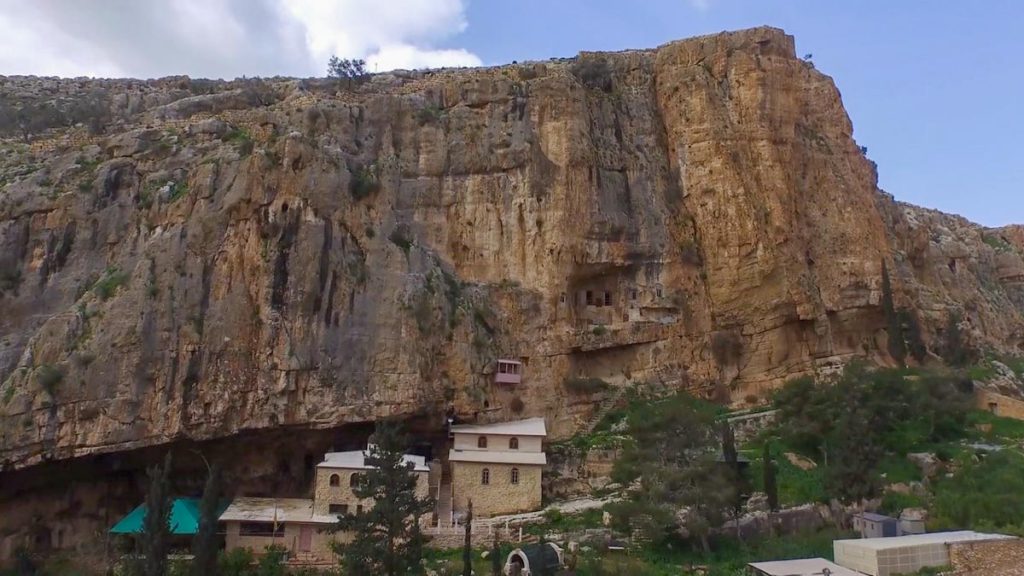Wadi Qelt contains monasteries and old Christian locations. According to tradition, the first monastic settlement of the Judaean desert, the Pharan lavra, was established by St Chariton the Confessor towards the end of the 3rd century in upper Wadi Qelt, an area known to the Greek Orthodox as Pharan Valley.
The Greek-Orthodox Paran Monastery (Dir Farah) at Wadi Qelt was built by the monk St. Haritun (St. Chariton) in the fourth century CE and is the earliest of the Judean Desert monasteries. He dedicated the monastery to Makarius, then bishop of Jerusalem.
The monastery is surrounded by orchards, agricultural terraces and cisterns, as well as the remains of buildings that once housed pilgrims, revealing its importance on the ancient pilgrims’ route
The monastery was destroyed in the Persian invasion of 614 CE. The monastery was restored in the 19th century by the White Russian Church funded by donations of the Russian Czars. Part of it is built over the Byzantine monastery; some of the rooms and chapels are built around caves in which the first monks lived. At the heart of the monastery is the traditional tomb of Haritoun. The monastery is still intermittently inhabited.

















